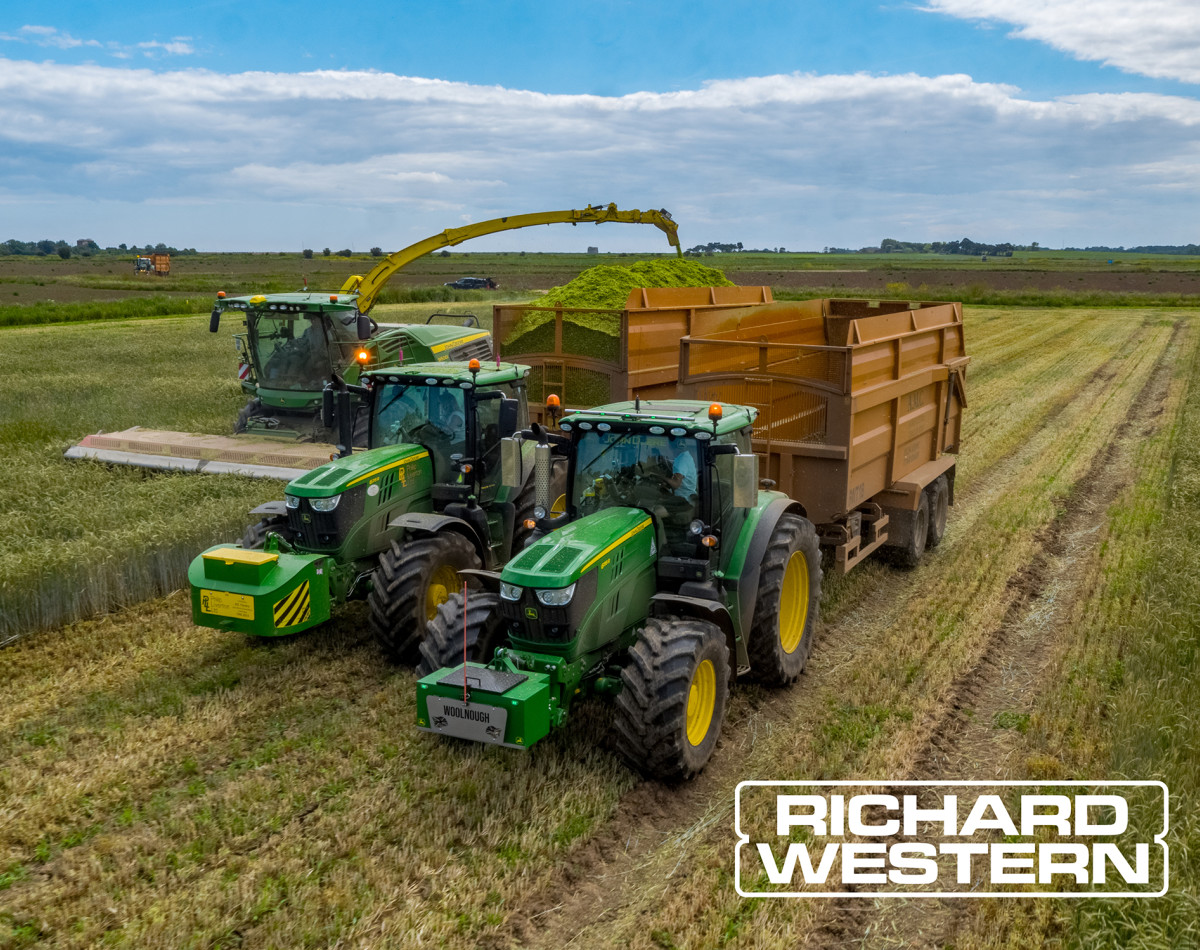Efficient trailer design can help realise full forager output

With few machines in a farm or contracting business’s fleet costing as much as a self-propelled forage harvester, keeping the machine on the move when in the field is essential. That means waiting on trailers can be costly if there isn’t one ready to take over from a full load. While there’s little that can be done about issues such as busy roads, there are a number of design characteristics that can help to hasten the tipping process and ensure a safe, smooth and swift run to and from the clamp.
Trailers designed with the latest strength and safety features to hold higher capacities have helped improve efficiency of the haulage of bulk forages such as grass and maize silage. But some incorporate distinct characteristics designed to take this further.
Many trailers designed for higher payloads incorporate twin tipping rams to handle the additional weight. While this overcomes the problem of requiring more oil flow to raise bigger loads, a key downside – apart from the additional componentry and complexity – is the slower tipping process. By using larger diameter single rams, Richard Western trailers have faster cycle times from the beginning of the tipping process through to the return of the body to the chassis, ensuring trailers are tipped and back in the field faster.
Another key advantage of the large single ram design is that it requires less oil then the twin ram arrangement. Using a single ¾ inch hydraulic hose to move oil in one line directly to the tipping ram is more efficient than feeding a twin ram that uses multiple lines of ½ inch hoses with additional fittings that restrict flow.
From a safety aspect, the use of a single ram means greater stability, with the single ram in the centre of the body ensuring the trailer body does not twist if the load within it is uneven. Richard Western silage trailers use six-stage single ram cylinders which are tenifer case-hardened for longevity. The high duty cycle rams are designed for the high year-round demands of road haulage applications, making them of a much higher specification than typical rams used for agricultural operations, as well as providing better reliability than a twin ram design
.
Richard Western ram selection and trailer design provide a 55-degree tipping angle, but a number of other features aid tipping and turnaround speed. A six-inch taper in the trailer body from front to rear aids material ejection, particularly in difficult/wet conditions. Floor welding is in line with the load rather than across it, helping to ensure full and smooth emptying. And with a hydraulic tailboard and sprung drawbar as standard features, ride quality and ease of driving mean faster transit times between field and clamp. Pick your trailer carefully and scrutinise its design features, and you can help to get the most from your forager, and produce quality silage your customers will appreciate.

Find your nearest dealer
From our international network
